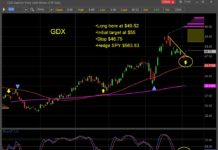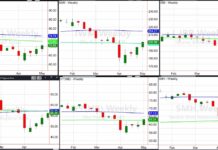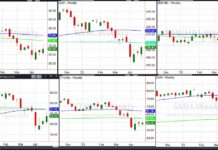Have you ever noticed how the pace of water flow seems to increase as it approaches a waterfall? If you watch a leaf floating on the water you will notice that is starts to accelerate slowly when there is a drop ahead. And once it gets close to the drop it accelerates rapidly. Scientists refer to this as a phase transition and many forward thinkers are using this illustration for what they believe may be happening in the financial markets.
During a phase transition events start slowly and then change quickly. That sure seems to describe what has been happening in the European bond markets the last several weeks. In one instance, the yield of the German 10-year Bund increased 514 percent in 8 trading days. Shortly thereafter, that same Bund had a 25% move in 32 minutes. Moreover, there have been spillover effects into other bond markets including the Japan and the United States. In Japan, their 10-year government bond had a 23 percent move—the biggest in over a decade. Here in the United States, the 10-year UST yield went from a low of 1.85% on April 17th to a high of around 2.3 percent this week.
Granted, here in the United States there is a tug of war that has been going on between those that think the Federal Reserve will soon raise interest rates versus those that believe they won’t. It is logical that some of the US Treasury bond market volatility can be attributed to that tug of war leading up to the Federal Reserve announcement on May 8th, but I believe that the majority of it has been caused by the rapid rise of bond yields in Europe.
Meanwhile, the U.S. equity markets seem to be carrying on as if everything in fine. Historically, equity investors don’t pay much attention to what happens in the bond markets. I believe that those that fail to do so may be caught by surprise and experience great losses.
Currently, bond prices have fallen because yields have gone up and that has caused losses for many that own US Treasury bonds (i.e. 20+ Year Treasury Bond ETF – TLT). Conversely, equities remain at the top of their range. If what we are seeing in the bond markets is the beginning of a phase transition, it will likely result in much greater levels of volatility in the equity markets around the world.
With markets at or near all-time highs; with global economies continuing to struggle to achieve real growth; with low inflation and enormous debt-loads, it is easy to build the case that there is limited upside potential in stocks compared to significant downside risk. And those same conditions should result in bond yields moving back to their lows.
If what we are beginning to witness in the bond markets is the phase transition that I (and many others) think it is, it could be the start of a new market era that is typified by much higher level of volatility and lower average annual returns. In that type of an environment, successful investors will have to learn that the strategies and approach taken will need to be very different from those they’ve used the last 30 years.
The difficulty in managing market cycles is that there isn’t any way to know how long a trend or counter-trend will last nor how long it will take to transition into the next cycle. So even though I believe that we will continue to see the U.S. economy slow down throughout the rest of the year, that doesn’t mean that I will avoid stocks altogether. There is a difference between an economy contracting and it just slowing. Certain areas of the market can do well even when the economy is slowing and I expect to find opportunities in stocks. In fact, the primary stock market trend indicator (which turned down 2 weeks ago) just gave the ‘up’ signal indicating that there is the potential for stocks to move higher.
That means that the money that I have had targeted to stocks that has been in the safe harbor of cash lately will be moving back into stocks. Even so, I still favor a healthy allocation to US Treasury Bonds and to cash.
Jeff’s Trending Indicators
US Stock Market Trending Up
US Bond Yields Yields Trending Down (means prices go up)
Follow Jeff on Twitter: @JeffVoudrie
Any opinions expressed herein are solely those of the author, and do not in any way represent the views or opinions of any other person or entity.








